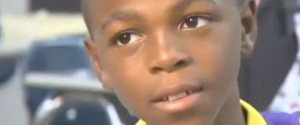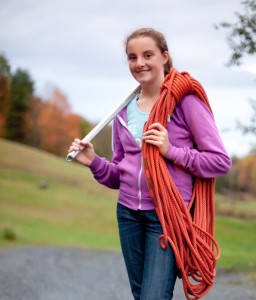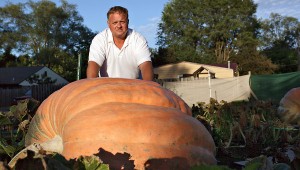Back in March I started a monthly feature on my blog: Shrinking and Pinking. This series focuses on female athletes, who often have to fight against the literally shrinking and pinking of their sports, uniforms, and professional lives/opportunities. The past few months a different definition of "shrinking" has been creeping into my posts-- child athletes. After 16-year-old Lexi Thompson's impressive, record-setting performance at an LPGA tournament, which has since earned her tour membership, I realized that women and kids deserved their own separate series. Hence, the new Pint-Sized Phenoms. This month I focus on kids (all 18 and under), like Lexi Thompson, who have performed remarkable physical feats, usually in the context of organized sports.
- At 16 Zach Veach is on track to become a champion race car driver. Last year he finished fifth in the USF2000 National Championship, which is the feeder system for IndyCar. He's only been driving since he was 12 (all the more remarkable when most of his competitors have been driving go-karts since they were four), and has only legally been able to drive on the roads for the past eight months. Of course it's a particularly sad moment for racing, with the death of Dan Wheldon, but I'm sure racers like Zach give many hope for the future. If you're interested in learning more about the kiddie race car circuit, I recommend the 2009 documentary Racing Dreams.
- Another impressive 16-year-old is Sami Stoner. Sami is a cross country runner in Ohio. She also happens to be legally blind. Sami is the first athlete to be cleared to use a guide dog by the Ohio High School Athletic Association. Read more of her inspirational story here.
- Like Sami Stoner, 15-year-old Doug Wells is an inspirational blind athlete. And he recently pitched a no hitter on the baseball diamond! In addition to playing baseball Doug also plays basketball and football.
- Speaking of football, three pint-sized football players have been in the news of late.
- Demias Jimerson is quite the pint-sized phenom. At only 11-years-old he made national news this fall when he was told that he was too good of a football player. His Arkansas school has a rule that stops a player from scoring more than three touchdowns if his team is ahead by at least 14 points. His story brought up issues of limiting talented children versus allowing others the opportunity to enjoy physical fitness. Will be interesting to see what this young man accomplishes both on and off the field as he develops. Perhaps he can "play up" on a another team so he can continue to develop his talents and others can enjoy a sporting activity with those who have similar skill sets.

- The New York Times article on 18-year-old Brianna Amat (the joint winning field-goal kicking and homecoming queen) definitely made the rounds. In case you missed it, click here to read about this Michigander who experienced two major events in her young life within an hour.

- In an anti-phenom moment, another Ohio athlete, a 16-year-old football player, exhibited one of the worst cases of poor sportsmanship in recent memory. This young man placed a metal tack in his glove which he used to poke his opponents during the after-game handshakes. But, get this: not only did his team win, he didn't even play in the game (he had been benched due to eligibility concerns). I'm hoping he has been benched indefinitely, especially after 20 fellow high school football players had to endure Tetanus shots as a result of the incident.
- To end on a more positive note, last month 17-year-old Kristen Kelliher broke a record. She became the youngest female (at 17 years, 4 months, and 13 days) to climb the highest point in each of the 48 contiguous states. Kelliher broke this 'highpointing" record (previously 18 years and 4 days) in her home state of Vermont. She soon hopes to break the record for all 50 states, with climbs planned for Hawaii and Alaska (the most dangerous). A few quotes from Kristin in yesterday's Boston Globe article on her accomplishment reveal the mindset of a pint-sized phenom: "I've wanted to do this since I was 9... I'm kind of competitive. Ok, a lot."








